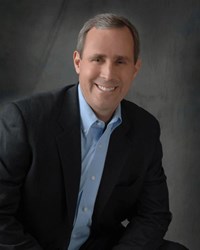Improving Staff Training And Patient Education With Telehealth Data

By David Thompson, CEO and chief medical officer, Health Navigator
Have you ever taken the time to analyze data about your patients? Access to data about common chief complaints can create a valuable step in staff training — a step that can improve the patient experience.
Health Navigator experts recently analyzed data from nearly 20,000 interactions at medical call centers across the country. The analysis included the top reasons patients call and the acuity of their symptoms. Results showed the top reasons for calling were fever, vomiting, stomach pain, cough, and head pain.
However, no two healthcare systems are the same, so common, acute care chief complaints may vary somewhat. This may be due to differences between systems or because of market demographics. The good news is any healthcare organization can collect information about why their patients call or visit by using a standardized chief complaint vocabulary.
Additionally, telehealth training is anticipated to become a new part of medical education, and chief complaint data provides a roadmap for curriculum development. This has the potential to improve and simplify training for the next generation of healthcare professionals.
Identifying Chief Complaints
As technology continues to be a major part of healthcare, it’s easier for hospitals and health systems to collect data on patient interactions. Telehealth platforms that use coded chief complaints can receive patient data in plain language and translate it into coded medical terminology that providers understand and can be integrated easily into their workflow. This fosters understanding and ease of use on both sides of a medical encounter, and provides a starting point to analyze common interactions.
So, how can healthcare systems use patient chief complaint data? Consider the following applications:
- Developing a telehealth educational curriculum for doctors, physician assistants, nurse practitioners, and nurses;
- Developing “telehealth encounter preparation” guidelines that outline what a common interaction might look like;
- Developing a standard call flow format and triage process for nurse lines or medical call centers;
- Prioritizing patient needs before they reach the doctor or nurse to streamline workflow (Who needs to be seen first?);
- Expanding patient education materials to include common chief complaints; and
- Creating treatment protocols for top chief complaints that can be easily accessed and shared with patients.
By analyzing common chief complaints and developing training materials, staff members can consistently and easily communicate common treatments, guidelines, and aftercare instructions. Using a telehealth platform for this is beneficial, as some platforms provide printable summaries of patient encounters which can be shared with patients, other caregivers, and used to teach healthcare personnel what to expect in other similar encounters.
The process of coding chief complaints, analyzing the data, and developing educational materials can lead to a more efficient care setting and improved workflow. Because this improves organization and patient prioritization, it can also contribute to patient satisfaction.
Ultimately, the needs of your patient population will change over time, and data about common chief complaints can help you keep a finger on the pulse of your population and the services you are delivering. And that type of knowledge can be a critical factor in your long-term success.
About The Author
David Thompson, MD, CHC, FACEP is CEO and chief medical officer at Health Navigator. A part-time faculty attending in the Northwestern Memorial Hospital Emergency Department, Dr. Thompson also serves as chief medical information officer for Schumacher Clinical Partners, and works as an author and partner with Self Care Decision, LLC and Schmitt-Thompson Clinical Content, LLC. In a collaboration with well-known pediatrician Dr. Barton Schmitt, Dr. Thompson has developed a comprehensive set of telephone triage protocols that are used in medical call centers and doctors’ offices in the United States and internationally. He is board-certified in both internal medicine and emergency medicine, having completed a dual residency at Northwestern Memorial Hospital at Northwestern University. Dr. Thompson is certified in healthcare compliance and is a Fellow in the American College of Emergency Physicians. He can be reached at david.thompson@healthnavigator.com.
